-
Posts
4,229 -
Joined
-
Last visited
-
Days Won
98
Content Type
Profiles
Forums
Resource Library
Events
Gallery
Blogs
Store
Community Map
Posts posted by Mayner
-
-
I used Branchlines Multibox gear boxes for recent builds as they are less fiddly to assemble that High Level Boxes as the effects of age on my eyesight and fingers. Although I have successfully used High Level gearboxes for over twenty years, I recently began to struggle to fit the intermediate gears and the final drive grub screw.
Branchline's have the advantage of lovely old fashioned printed catalogues/leaflets and Irish and Manx models in 4 and 7mm scales
-
 1
1
-
-
54 minutes ago, MOGUL said:
remember seeing double deck car transporters with "Blue Dragon" branding during the late 60s
Intriguing, tell us more please or even better pics of them!
No photos only a kid at the time probably 1st time I saw a car transporter lorry. Arrival of car transporters moving cars direct from the factory/importers to the dealers probably spelt the death knell of transporting cars by rail in Ireland.
Originally registered in Cork to serve the motor industry closed 2015, appears to have expanded to the UK. https://www.tuugo.info/CompanyPictures/blue-dragon-transport/034000552183
-
5 hours ago, murphaph said:
I wonder did any of the Ford cars get shipped over the border by rail at all. This whole area is quite fascinating and this traffic didn't exist in later eras, so anyone wanting to model a train load of cars needs to be looking at the 60s and earlier it seems. Might encourage more folks to model the era!
Apart from movements from the Factory to Cork Goods, Cars are likely to have been moved as individual wagon loads or small cuts of wagons in mixed goods trains rather than moving cars in train loads.
Wagons in loose coupled goods trains were usually marshalled in station order to simplify shunting en-route. A goods leaving Cork for Dublin would have wagons for Mallow (1st Stop) and the Kerry Road marshalled next to the loco, followed by wagons for Charleville 2nd stop and so-forth.
Up to the 80s there were assembly plants for the major marques in the Republic Dublin had Leyland/BMC (Austin, Morris, Wolsley) General Motors, VW, Toyota and Nissan, and Wexford had a Renault plant. So potential car, light commerical and farm machinery on goods trains from Dublin and Wexford.
Its likely new car traffic ceased by the early 70s remember seeing double deck car transporters with "Blue Dragon" branding during the late 60s
The BMC/Austin 1800 in the photo of LB23318 is likely to have started its journey on a mixed goods train out of Kingsbridge Goods
Looking at Locomotives and Rolling Stock of CIE and NIR the LB flat wagons are not listed in the 1979 edition, while the PW Flats (1973-4 H van conversions) are classed as Ballast Wagons
The 1987 edition indicates that the 1973-4) PW Flats and some GSWR Dropside Ballast Wagons were still on the books but whether they were actually in use is open to question. I saw several PW Flats (cut down H Vans)waiting scrapping at Mullingar in 1993, CIE tended to redundant 20T Vac braked Flat wagons dating from the mid-1960s for P.W use from the late 70s (Hiab, Sleeper, spoil skips). Nice photo of a 20T Vac Brake flat loaded with sleepers a Lansdown Road (possibly DART works) in the 79 & 87 editions of L&RS of CIE & NIR
-
 5
5
-
 5
5
-
-
Probably one of the most inspiring layouts I have seen.
Best pronounced in Maori or New Zealand English I was reminded of this layout after reading an RM Web thread on the African Cape to Cairo.
I was gobsmacked when I visited this layout during a convention in 2010 (before the earthquake), not knowing what to expect with the seemingly corny name.
The layout features a typical Central North Island settlement in the early 1900 with realistically modelled Central North Island bush (native forest) which extends in some places from floor to ceiling and includes models of specific New Zealand tree species, the builders main interest, the moving train merely gives movement to the scene.
-
 4
4
-
 1
1
-
-
On 6/12/2023 at 10:29 AM, jhb171achill said:
....and theirein lies the problem. Modern governments have every incentive to think short-term, and no incentive to think long-term; and even that's assuming that the gobdaws and gombeen men we elect are even capable of rational, intelligent thought.
The question is whether the Irish public are prepared to pay higher taxes (including residential rates) for improved public transport (including rail). Rate payer in Auckland (similar population to Dublin)are not exactly happy about about paying a 4% increase in their residential rates from 2026 onwards to cover annual operating losses on the new City Centre Rail Link.
We recently had an election in New Zealand where a centre-right coalition was elected on a platform of tax cuts and major road schemes, and a centre-left government heavily committed to major investment in public transport projects including Heavy and Light Rail soundly defeated.
On the plus side they have pledged not to increase the qualifying age for Superannuation (old age pension) above 65 unlike the UK and Ireland, so I am not too bothered.
-
 1
1
-
-
Back to work on the MGWR 2-4-0 now that work on 98 is complete until I find her tender wheels.
The 2-4-0 is based on a loco that was re-built with a superheated boiler in 1924, received the original type saturated boiler in 1930 before being fitted with a Y Type GSR superheated boiler in 1935, before going two further boiler changes before the loco was withdrawn in 1961!

650 in early GSR condition with canopy cab superheated roundtopped boiler with extended smokebox and Inchacore pattern chimney.
The loco would have been fitted with an extended smokebox to accomodate the superheater header when re-built in 1924, its unclear from photos whether the loco retained the extended smokebox when it was fitted with a saturated boiler in 1930. Photos of the actual loco are basically 3/4 views from the front and rear, though the smoke box is straight sided without the small flare visible in 3/4 front photos of superheated members of the class

MGWR 2-4-0 as rebuilt with canopy cab and superheated boiler with extended smokebox.
Originally assembled as a test build, I have replaced the boiler/firebox and splashers with updated parts.

MGWR 2-4-0 rebuilt with canopy cab, saturated boiler with riveted version of standard smokebox.
The pewter castings require cleaning up!
I designed the kit to be assembled either in saturated or superheated form including a set of smokebox parts that could be assembled in its original flush or later pop riveted versions (embossed rivets)

I originally planned to emboss the rivets using a rivet press, but turned out simpler and quicker to use a simple
riveting tool I bought from London Road Models at a UK exhibition many years ago!

I used a small Tool Makers Clamp to hold the wrapper in position as I soldered it to the smoke box former gradually working around from one side, dressing to the profile of the former.
The moment of truth wrapper to the smokebox former before making the final soldered joint.
-
 10
10
-
-
Going back to the original question, Marks Models and Leslie are effectively creating an "Irish Railroad Range" with Marks proposed UTA Jinty and Marks and Leslie's re-liveried Dapol wagons.
Personally I would not get too hung up on having Irish locos and stock when starting out on a limited budget, apart from the initial train set (Triang Hornby British outline) most of the locos and stock bought in my teens and twenties were either second hand or clearance sale. (Palitoy and Airfix severely over-estimated demand resulting in a glut of British outline rtr in the early 1980s.
I got more enjoyment out of scratchbuilding Irish station buildings than trying to run trains and shifted to N Gauge in the late 70s out of frustration trying to build a OO gauge Irish layout in a box-bedroom. After a false start with an 8X2 continuous run N gauge layout based on Kilmessan Junction (folding baseboard problem), .
I built a U shaped terminus to fiddle yard layout around 3 walls of an 11X11 bedroom, featuring a medium sized provincial terminal, a scenic section with a large viaduct and a small junction station. N gauge locos was originally British outline rtr, though I later re-painted the BR Mk1 coaches and diesels in CIE black and tan scheme and kitbashed some American diesels into reasonable models of GM BoBos and a 001. Although built over 40 years ago the N gauge bedroom layout was probably my most successful layout in terms of successful operation and presentation almost but not-quite completing the scenic works.
Buildings can be constructed using traditional techniques in cardboard or printed on card using IT such as Kevin Sweeney's excellent models of buildings in Cavan and Longford.
I moved back to 4mm mainly to build models of Irish locos and stock, while shifting to American outline N as its easier to model a railway in a landscape in N than OO
-
 2
2
-
-
The weighted tender set up is basically a modified version of the system used by Terry McDermott (TMD) on the GNR(I) S Class during the 1980s and the current SSM kit!
I substituted an insulated drawbar for the metal drawbar used by SSM because I use the "American" pick-up arrangement where the loco picks up power on one side and the tender on the opposite side using live axle pick up. I find this arrangement simpler than using wiper pick ups.

Two pieces of light gauge phospor bronze wire provide springing/keep the leading and centre axle in contact at all times with the track.

I used the same weighted tender principal on the MGWR 2-4-0, with this arrangement both the 2-4-0 and 4-4-0 continuously hauled 15 IRM 4w wagon on test.
The unpainted brass wire keepers is a temporary arrangement until I find/get the correct spoked wheels and I will trim back the excess.
-
 4
4
-
 1
1
-
-
On 1/12/2023 at 2:03 AM, Tullygrainey said:
The BCDR Oldbury coaches are just about finished bar some minor tweaking.
All aboard. The roofs are detachable so that drunk passengers can be helped back to their seats if they fall over.
The bodywork should probably be lined out but I don't have that sort of courage.
A little bit of light weathering has helped blend body to chassis...
... and Diesel No.2 has something appropriate to haul at last.
Mind you, what it's doing at Loughan Quay is anyone's guess.
IMG_9006.mov 42.86 MB · 0 downloads
Really astounded by Alan's productivity rate, completing so many exquisite models of unusual prototypes at such a rapid rate.
-
 2
2
-
 1
1
-
-
Managed to fit 98 with a correct set of number plates, couplers, and couple the loco and tender together again.



98 was assembled from the original test etch to check that the parts would fit and the assembly a bit rushed.
I am planning to model the GSR era so no flying snail to bother about.

I am planning to model the GSR area so no flying snail to worry about.

I removed the tender body in order to retro-fitted the tender with a NEM coupler pocket from a production etch, exposing the weight that's partially supported by the loco draw-bar to improve traction. The wheels are temporary until I find the correct spoked wheels that are hidden away somewhere.

Underside of tender, insulated drawbar is formed from a copper clad sleeper with the copper removed, the trailing axle is in rigid bearings, the leading and centre axle non-load bearing, lightly sprung free to move up and down in the axle slots, the brass wires are retainers to stop the wheelsets dropping out!

Chassis viewed from above on Hornby No3 or 4 curve, the loco-tender drawbar is fitted to the underside to the frame spacers and slots through the existing holes in the loco and tender drag-beams.

Assembled chassis from below drawbar is basically fixed with minimal movement at the tender end, free to pivot on the bolt at the rear of the loco.
The bogie has a pivot point positioned ahead of the leading driving wheels and is free to slide from side to side in a curved slot at the bogie centre, with a retaining nut to prevent the bogie flopping about. Mercifully there were large frame cut outs around the bogie wheels on GSWR 4-4-0s and my OO gauge 52 Class builds navigate 3rd radius curves without shorting, though the same approach would not work with MGWR 4-4-0s with the absence of frame cut outs and larger diameter bogie wheel.
-
 9
9
-
 3
3
-
-
6 hours ago, jhb171achill said:
An interesting point in relation to this loco.
Many times, in 00 gauge, never mind the lesser used 0 gauge, conversations like this take place:
"It's a pity they don't make a RTR model of _____"
"Well, it wasn't common / wasn't used widely / wasn't on the go in real life all that lonjg, so the market is so limited it wouldn't be worth it"
.
Yes, I know it's just a re-liveried "British" engine - but - food for thought....? (did I mention UTA "Jeeps"?)
I think a high proportion of Irish rtr models are bought by collectors because of their high potential re-sale value, rather than to something to run on a layout. So in a way the numbers used and use becomes irrelevant, customers tend to buy 1 or 2 models of each variation produced.
Paddy Murphy once used models selling out and potential re-sale value as a marketing ploy on the Murphy Models website.
In a way the NCC/UTA Jinty is a no brainer if you can find a factory that's willing to slot a few "Irish" Jinties into a production run.
Bachmann produced a OO gauge version for MM and Marks appear to have commissioned a Railroad version of the Jinty from Marks.
What next a Hornby Royal Scot masquerading as an 800 class?
-
 1
1
-
 2
2
-
-
8 hours ago, leslie10646 said:
Yes, JB, I understand that they whizzed along quite nicely.
Mind you, it would take something to beat my 74.5mph with a 16E Pacific in South Africa on 3ft 6in gauge.
If you took that down a seventh to the "Three Fut", then the CDR, C&L etc should have been doing sixty or so!
I'm unaware of any logs of the CB&PR, but as it was predominantly a commuter line and with double track, they may have knocked up a half decent speed. Who knows?
Not exactly the British or Irish concept of a narrow gauge trains.
Maybe Queenslands 3'6" Gauge "Tilt Train" holds the Australian record at 210Km-----app/130mph and 160km----99.4mph in regular service.
A bit slower in New Zealand fastest officially established speed of 125km/h--79mph held by a Vulcan railcar (similar mechanically to GWR railcars) on a 1940 trial run in the South Island. Unofficial accounts of the modern JA Class 4-8-2s running at 85mph on the Canterbury Plains. These days the line limit is 100km for freight and passenger trains
-
Managed to make time to fit No98s wheels and coupling rods, but need to fit front vacuum pipe and screw couplers before returning the loco to the display case.

I masked the tyres with Tamiya 2mm masking tape before priming and painting the wheels in GSR grey (matched locally from a sample supplied by JHB)

The Markits driving wheels are locked in place by a slotted nut, the nuts in turn disguised by etched Markits "axlenut covers secured in place by the crankpin. While the original Romford crankpins were robust and easy to use the current Markits SuperDelux crankpins are threaded 14BA and require care in fixing to avoid damaging the pin.

98 back on her wheels, the number plate seems to be a temporary the real 93 was a slightly larger 60 Class or D14 which was re-built with a superheated belpair boiler during the 1930s.
Model of 98 is inspired by a photo of the loco at Inchacore during the late 40s, she retained her raised round topped firebox until withdrawn in 1954.
-
 14
14
-
-
Not the first railway station at Woodbrook a two platform halt at MP 11 used to serve the Golf Course most likely for major events but later disused.
-
3 hours ago, DiveController said:
John, is there any coach or kit that is currently available that would work well with these, the original 60' kit intended to work with your overlays is OOS
I don't know.
The original Airfix/GMR 60' coaches occasionally appear on e-bay https://www.ebay.co.uk/p/1351072475?iid=384074744618 though the corridor connections which were originally moulded in a flexible plastic tend to be brittle. B
The Bachmann 60' porthole coaches may be suitable, beware the Airfix/GMR/GMR Stanier Brakes and Bachmann Porthole Brakes as they are 57' coaches https://oliviastrains.com/product-category/bachmann-main/bachmann-coaches/bachmann-lms-porthole-coaches/
-
 1
1
-
 1
1
-
-
On 26/11/2023 at 2:32 AM, Gabhal Luimnigh said:
Lovely photos, what are the white box type things between the lines?
Engineers pegs put in place for alignment or re-laying work.
The man standing under the bridge may be a Lookout Man for a track gang working on the line.
Track in the photos of the station and cutting is jointed track laid on a mixture of wooden and concrete sleepers which were extensively used on the GNR during the late 50s-early 60s
-
 3
3
-
 3
3
-
-
21 hours ago, Patrick Davey said:
More excellent advice, thanks, GM! Clogherhead is intended to be something of an anomaly though with a basic passenger service through the week, and the remnants of holiday traffic at weekends, and also excursions, so the idea will be that the station would be manned during the day, even during the week, (anything to justify the frequent appearances of those MM & IRM diesels
 )
)
The booking hall interior will be fully detailed, so that’s a great idea about putting posters in there, and yes I think I’ll take down some of the external enamel ones as well. Thanks

Clogherhead seems to be a reasonably important fishing port, possibly a 4w or bogie luggage van on the 'early morning" Dublin commuter train with fresh fish for the Dublin Fish Market, the N1 Road north from Dublin was pretty horrendous until upgraded to motorway standards during the 1990s.
Cheap land and a commuter connection to Dublin would have been attractive to house builders during the 70s and 80s, companies that built in North Dublin in the 60s started buying relatively cheap building land in the Drogheda area during the 70s.
I am a bit conflicted by the neglect and dereliction of Clogherhead, quite different to my memories of stations on CIE branch and secondary lines during the 70s which tended to be maintained to a reasonable standard. CIE only seem to have cut back on building maintenance from the late 70s onwards, stations on lines that lost their regular passenger traffic during the 1960s were often fitted with 'modern' electric platform lighting and buildings painted in the 1960s corporate grey and white colour scheme.
I guess the local CIE Area Manager decided the money was better spent on maintaining mainline stations than a branch line.
-
 3
3
-
-
The most interesting aspect of Mail Train operation was the way trains divided at junctions like Athlone, Mullingar and Mallow almost until the end of Mail Train operation. The Galway Night Mails would set out with portions for Sligo and Westport which would be divided at the junctions on the out bound run to the provinces and re-combined on the return run to Dublin. The portions might include one or more 4w or bogie Luggage Vans, a TPO and a single coach when the Sligo and Westport Night Mails carried passengers.
Up to the late early 70s it wasn't feasible to take a day trip from Dublin to Westport and spend some meaningful time at the destination without taking the 'Night Mail' to get home due to the sparse nature of CIE passenger services.
An other train for Noel to model would be the short lived Newspaper Trains from Dublin to the Provinces that operated in the early 70s often a Bo Bo and a single Luggage Van.
The Wexford Newspaper train usually worked down during the early hours of the morning with a B141 and a Luggage van, before taking up summer season Wexford-Rosslare passenger services, before returning Loco and empty Luggage Van to Dublin. For a short time before the withdrawl of the Wexford Newspaper train in the late 70s CIE operated a late evening Wexford-Dublin passenger train using the Wexford-Rosslare Harbour set returning as a newspaper and empty passenger service during the early morning.
-
 1
1
-
 3
3
-
-
There was a lot of detail variation among early CIE coaching stock, 1st batch Coaches were 60' long on GSR bogies and welded version of the GSR underframe, length increased to 61'6" for second and subsequent batches of coaches, Bullied triangulated underframe under coaches introduced 54-55.

1954 Side Corridor Standard Bulleid underframe and Commonwealth Bogies GSRPS Tralee 1992-3

1463 "Laminate" 1958 Open Standard Mullingar 1983 Laminate (Aluminium-insulation-ply panels) body re-skinned with aluminium on timber framing late 1980s.
The main spotting difference between the 51-53/5 stock and the Laminates was the shape of the toilet windows and the end profile. The toilet compartments on some Bredin and 51-53 stock were placed at the centre rather than the end of the carriages.
-
 4
4
-
 2
2
-
-
The coach sides are available to order 6-8 week lead time.
I need to quote for each individual order as they are shipped direct from our supplier in the UK rather than a stock item
I recently supplied GSSGV sides and detail overlays for £40 plus shipping
-
 1
1
-
-
On 13/11/2023 at 4:03 AM, DJ Dangerous said:
Great to see the work unfolding before our very eyes. Some very shiny looking orange and black coaches nestled away on Platform 3.
Are the track panels held together using those bits of metal while in storage, as wood would rot?
BNM used sectional track with metal sleepers (not unlike tinplate model railway track) for both its permanent and temporary lines. The steel sleepers were used for strength and lighter weight to allow track to be put down, lifted and relocated easily as opposed to rot or insect attack.
Similar systems were/are used on sugar plantations and once used in civil engineering works.
-
 1
1
-
 1
1
-
-
I have dabbled in modelling Irish Railways in OO, N during the late 70s/early 80s, before attempting to model 5'3" on 21mm and 3' on 12mm, I have a couple of Large Scale Irish 3' gauge items 15mm Scale on 45mm (G/Gauge 1 track.
I have also dabbled in American outline N (1:160) and British Outline EM, my main interest is in model making rather than running or collecting rtr and not really interested in how.
Ironically the shift to N in the late 70s was driven mainly with frustration with my attempts to model Irish railways in OO and thought that I would be less tempted to attempt modelling Irish railways in N, but ended up with a reasonably realistic Irish outline layout using repainted/modified rtr and scratchbuilt buildings and structures.
I don't get hung up on the designation of my Irish Broad and Narrow gauge locos and stock, they are simply 4mm Scale that run on 12mm or 21mm gauge track with wheel profiles and running clearance based on EM Gauge Society clearances, the chances of being invited to run on another 21mm or 21mm gauge layout are fairly slim.
-
 1
1
-
-
2 hours ago, jhb171achill said:
I’m certain the demand will increase. With the norm in Ireland being various 4.4.0 and 0.6.0 types, one or both will be inevitable, I feel.
A common and late-lasting GNR, MGWR or GSWR design of either type would seem the most logical.
A preserved loco is the most likely candidate given IRMs focus on accuracy and practice of "measuring up" existing locos and stock when producing a model. Designing and manufacturing a model of a MGWR or GSWR design to the same standard would be challenging involving a lot of guesswork as available drawings and information is somewhat sketchy in nature.
Also the RPSI had their loco fleet digitally scanned about 10-15 years ago apparrently for modelling purposes.
-
 4
4
-
 2
2
-
-
49 minutes ago, jhb171achill said:
Yes, it would; but not necessarily in the exact same building, perhaps?
I’ve a notion that cabin was at the least very substantially modernised from its original form more recently.
The cabin appears to date from GSR/CIE re-signalling of Cork station and was similar in general styling to other large GSR cabins (e.g. Athenry, Dunlaoire, Claremorris)
Listed with 110 levers the largest mechanical lever frame in Ireland in Railway Lines of CIE & NIR 1985, its likely that the interior of the cabin would have been modified/working levers reduced as the track layout was modified and colour light signalling introduced from the late 80s onwards.
As Jhb states the cabin was substantially "modernised" from its original form in the IE era substantially changing the appearance of the building the original timber window frames replaced with aluminium (tnted?) glazing and external window cleaning walkways added.
https://www.flickr.com/photos/86202570@N02/15549327157
-
 2
2
-
 2
2
-
.png.c363cdf5c3fb7955cd92a55eb6dbbae0.png)


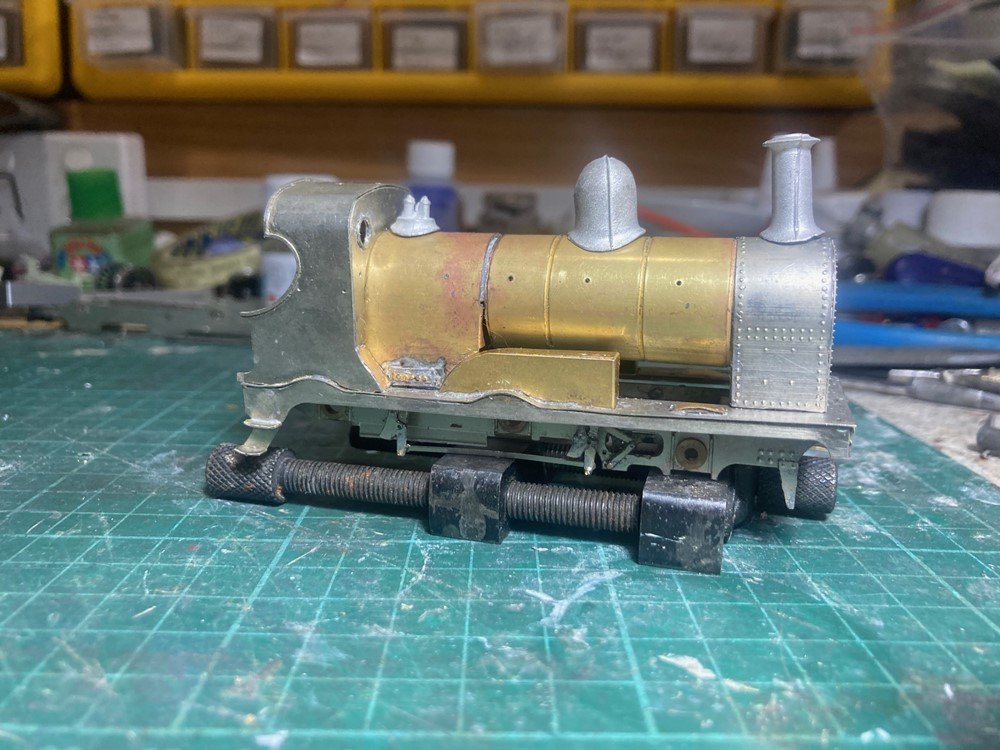
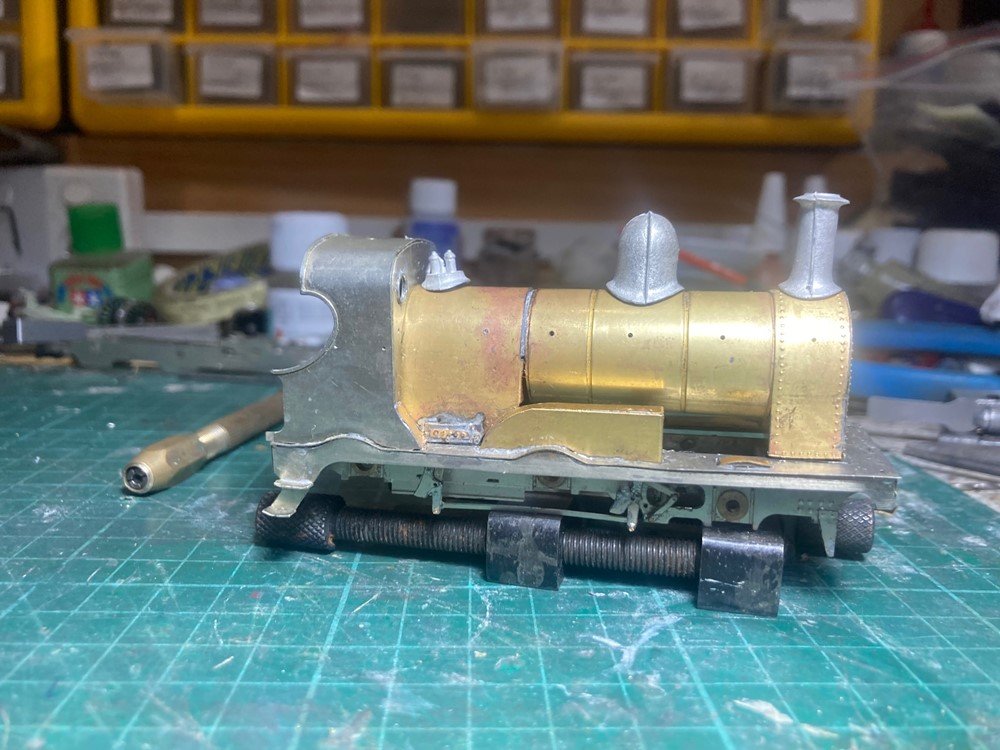
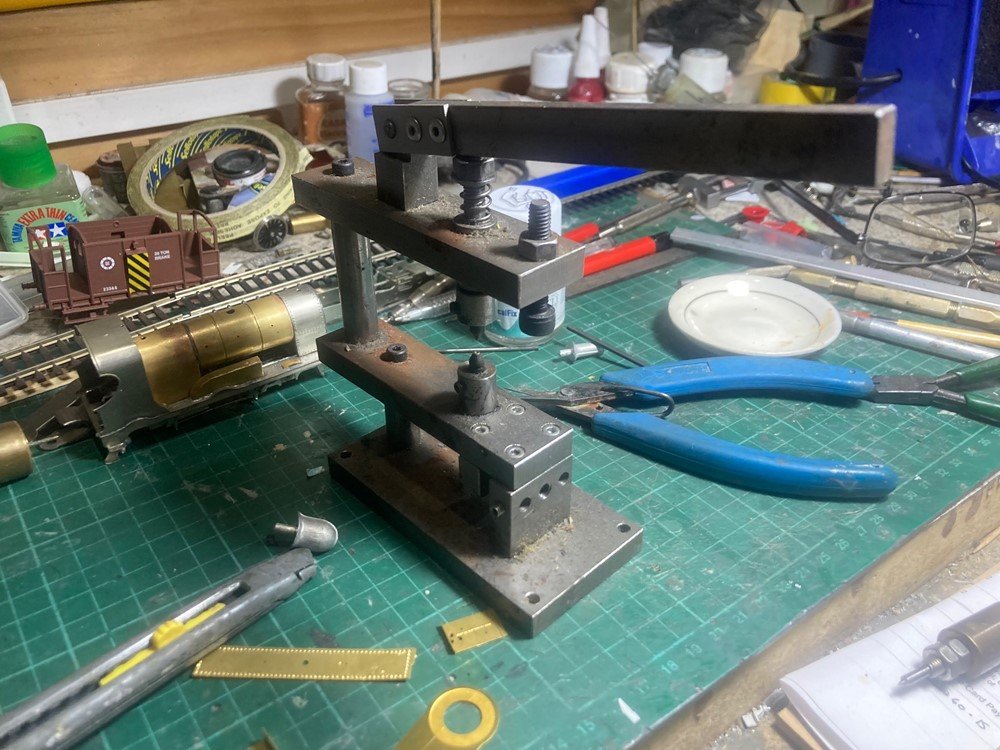
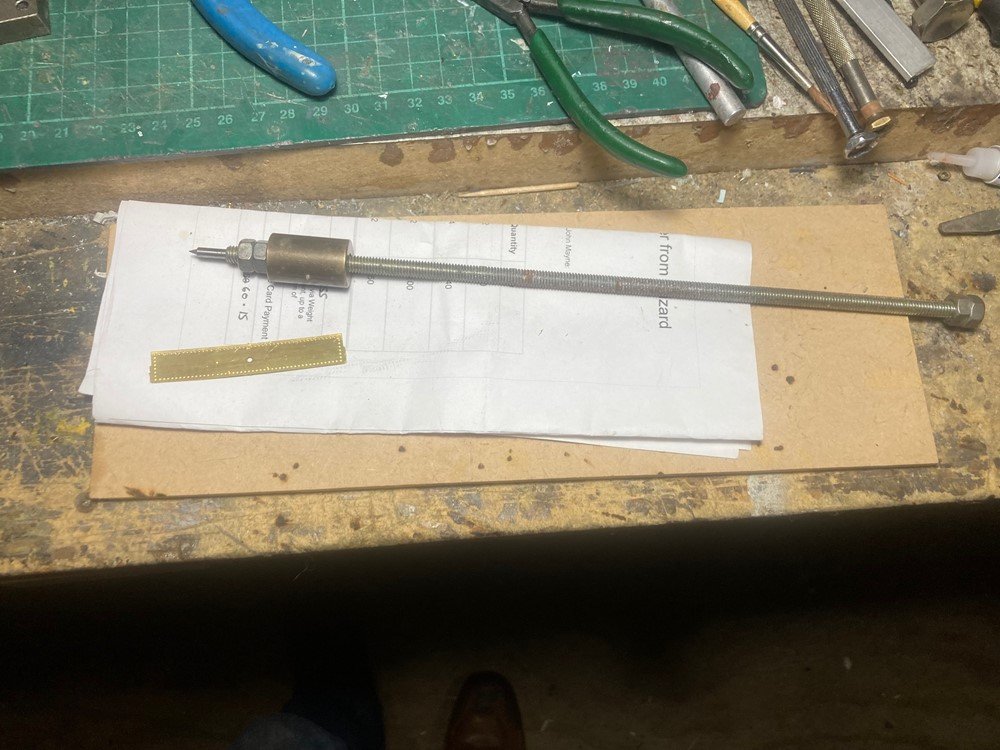

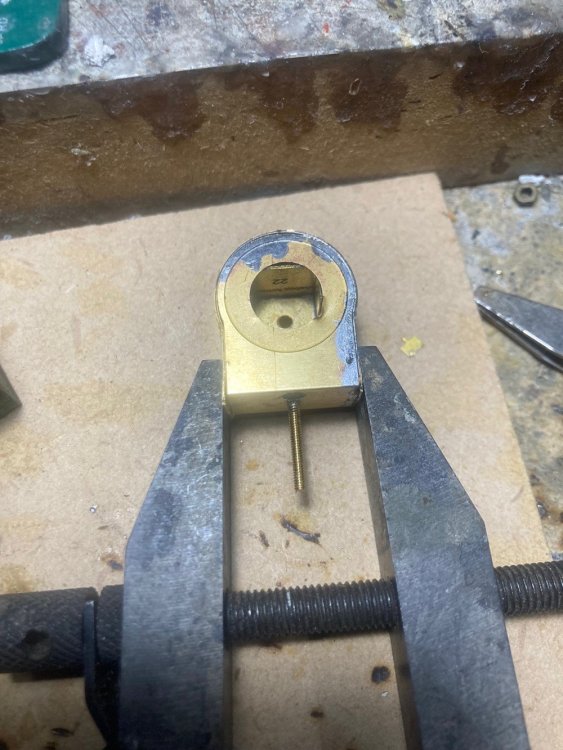
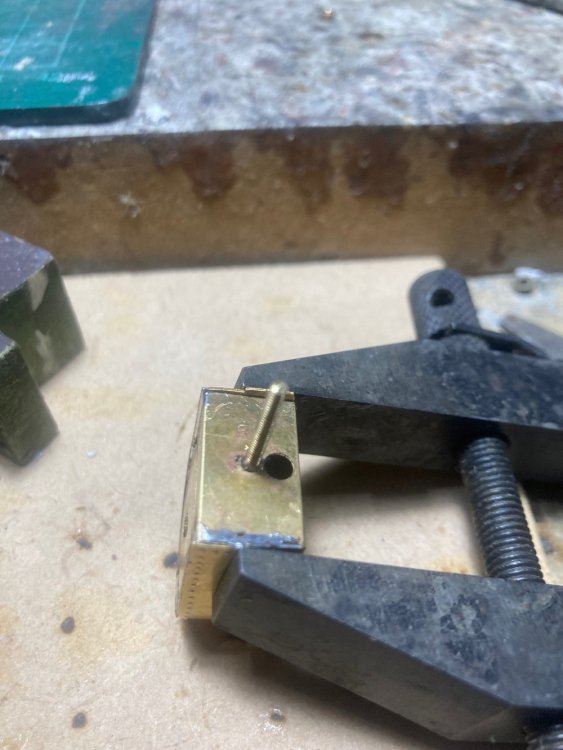
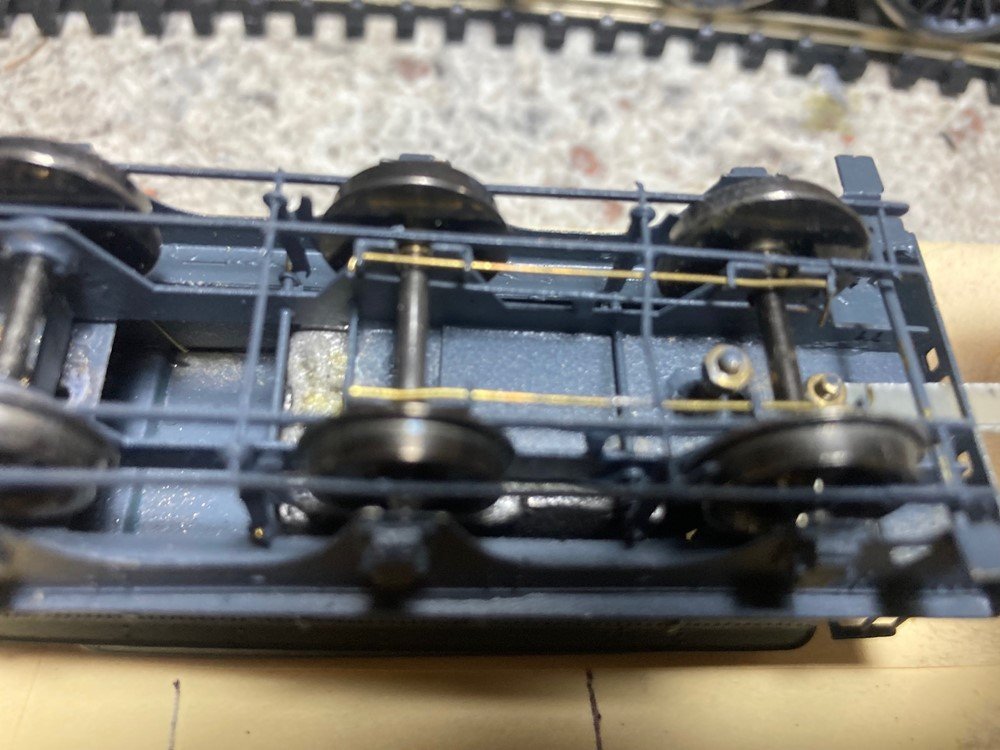

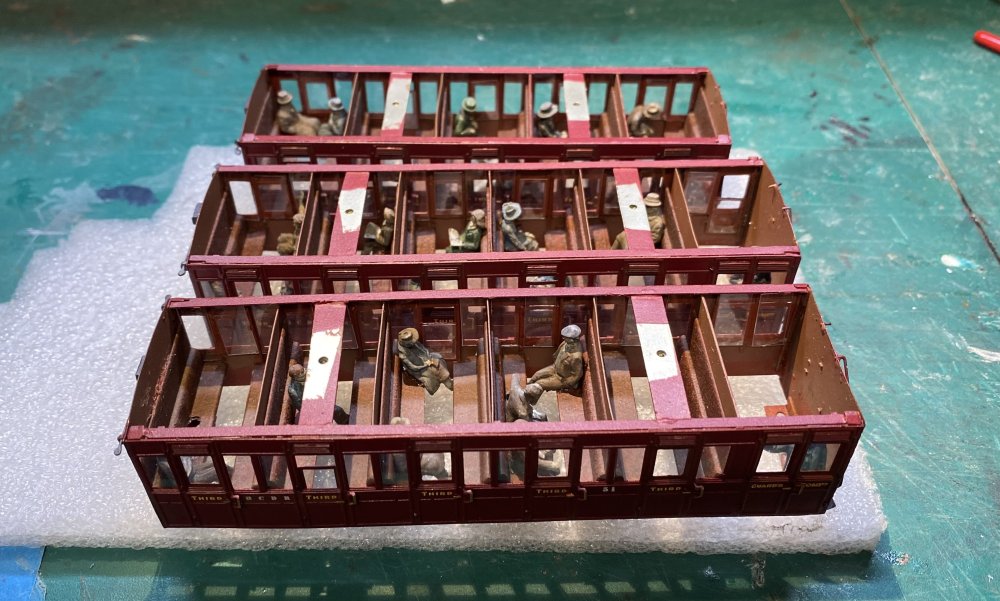
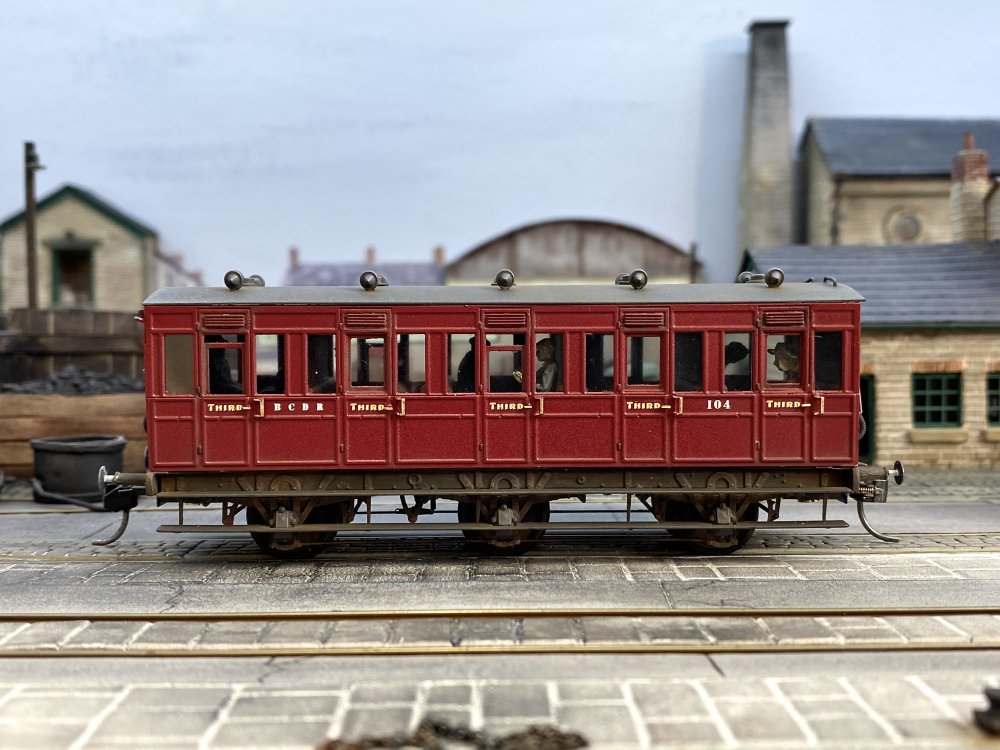
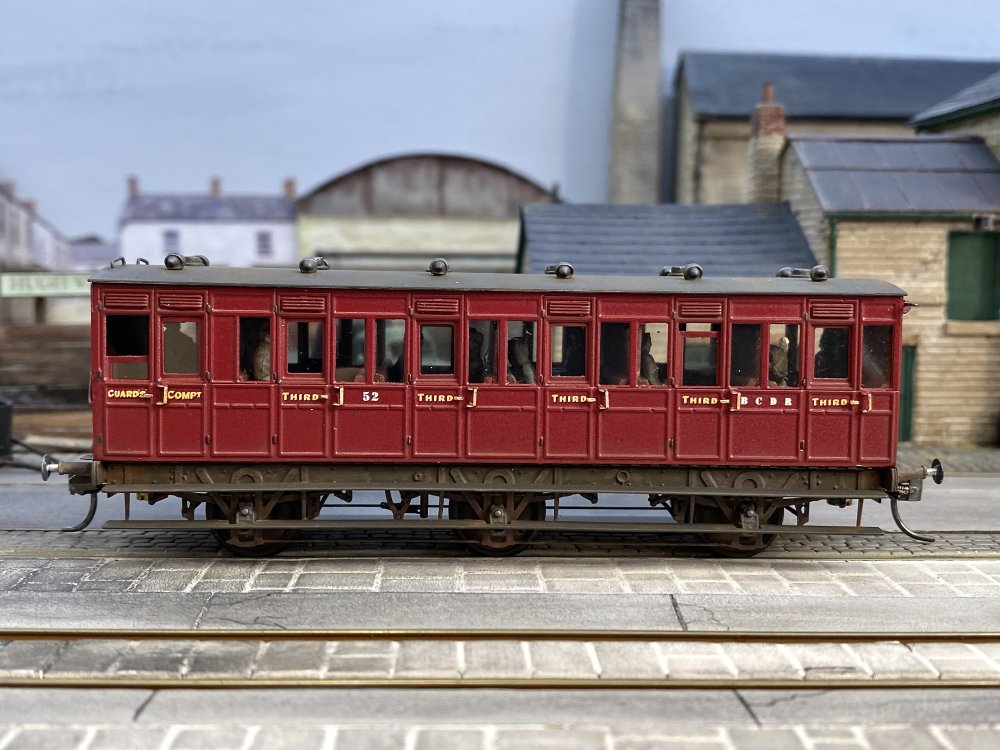
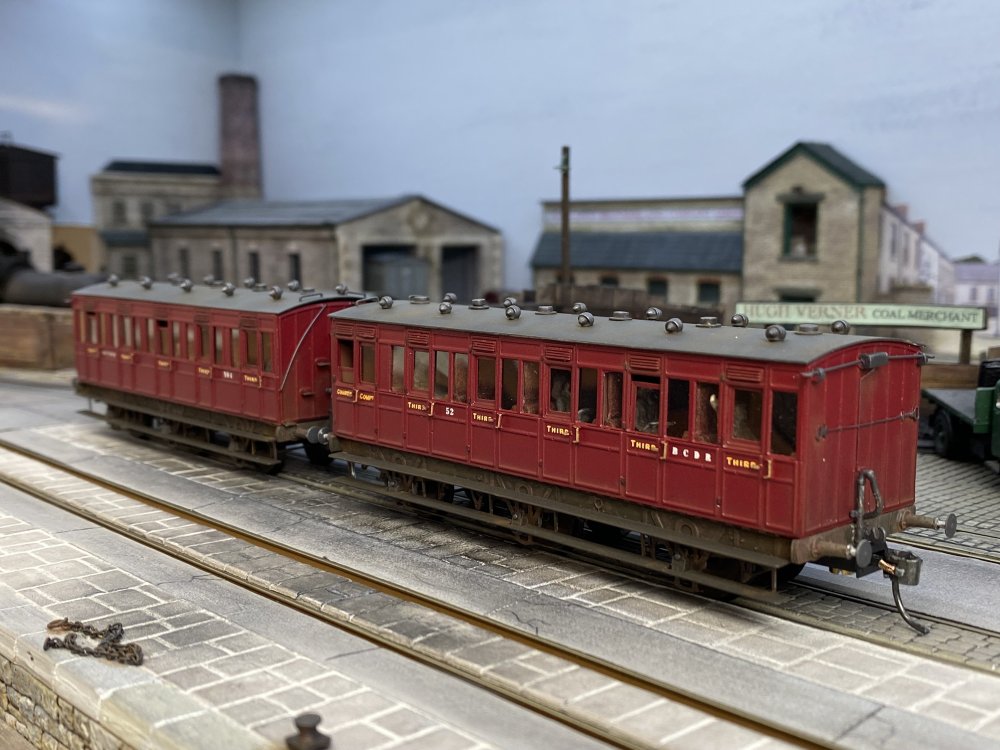
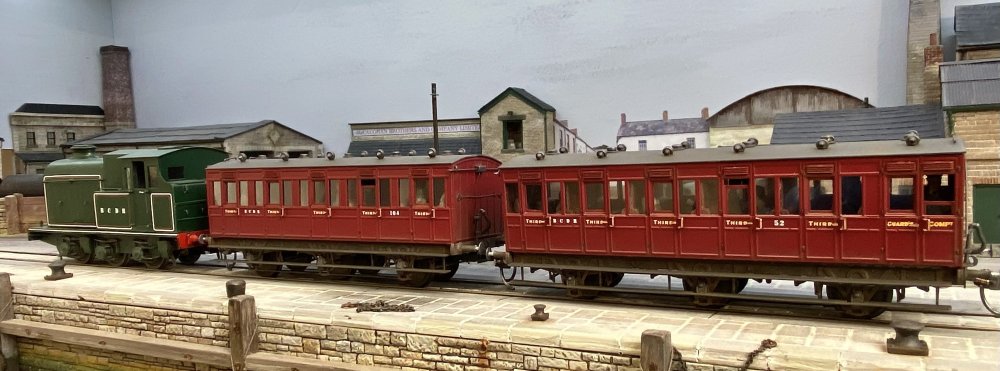
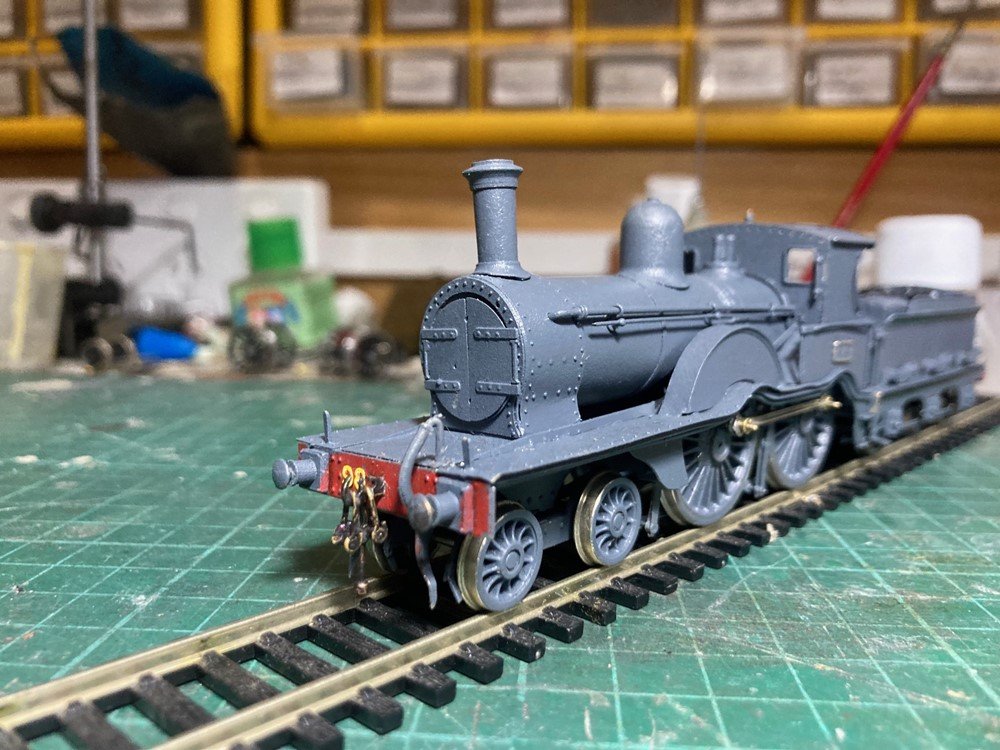
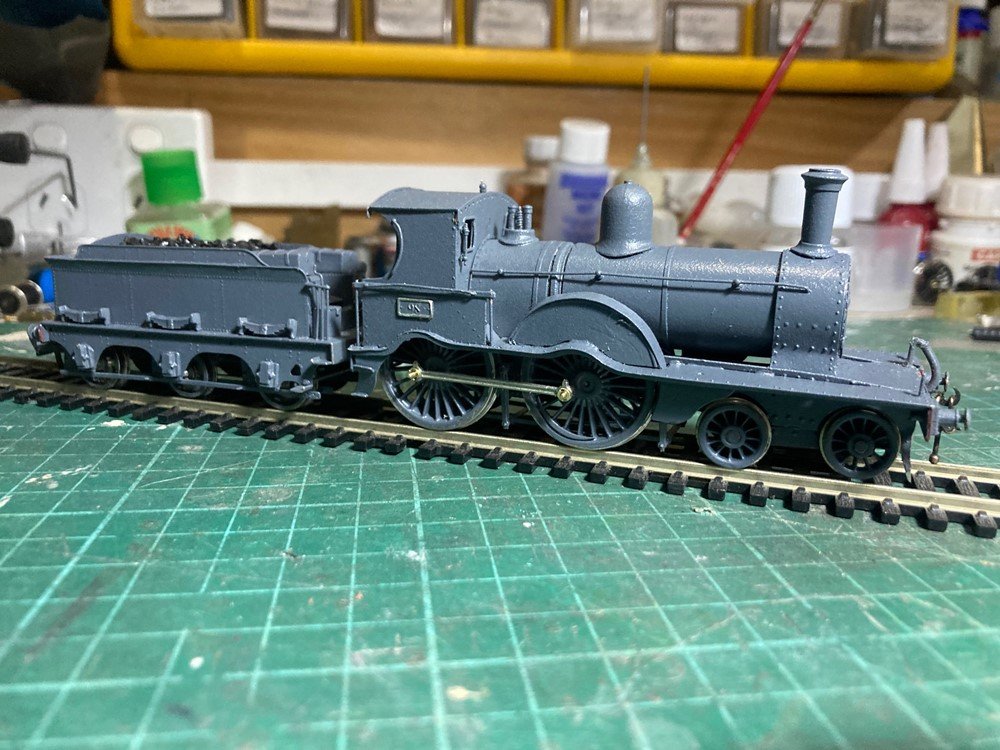
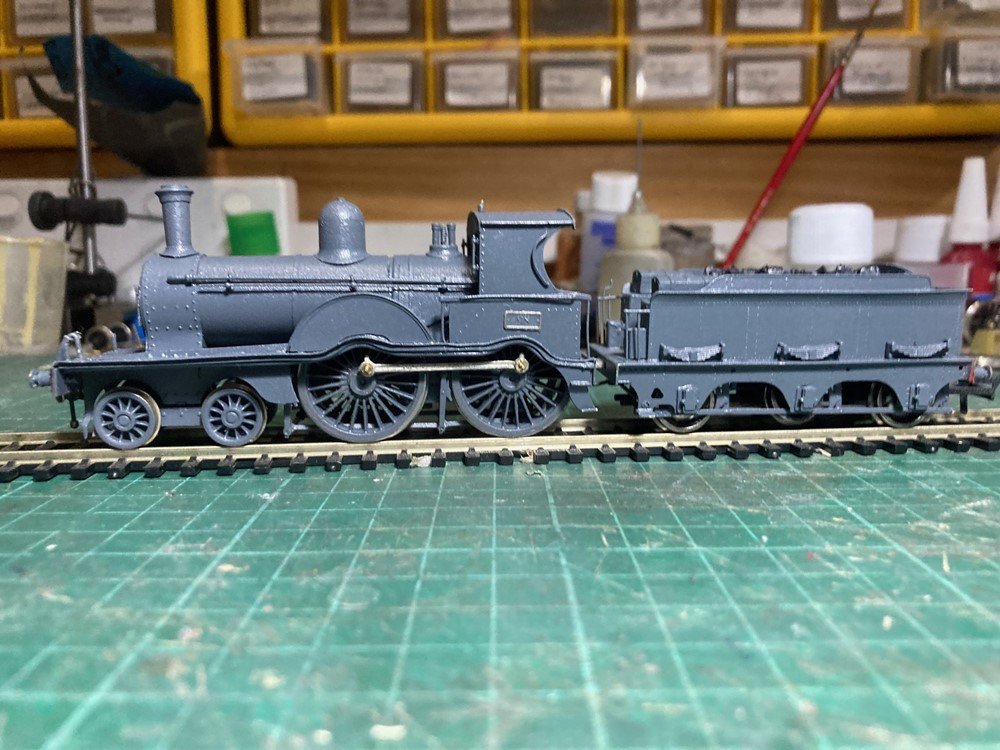

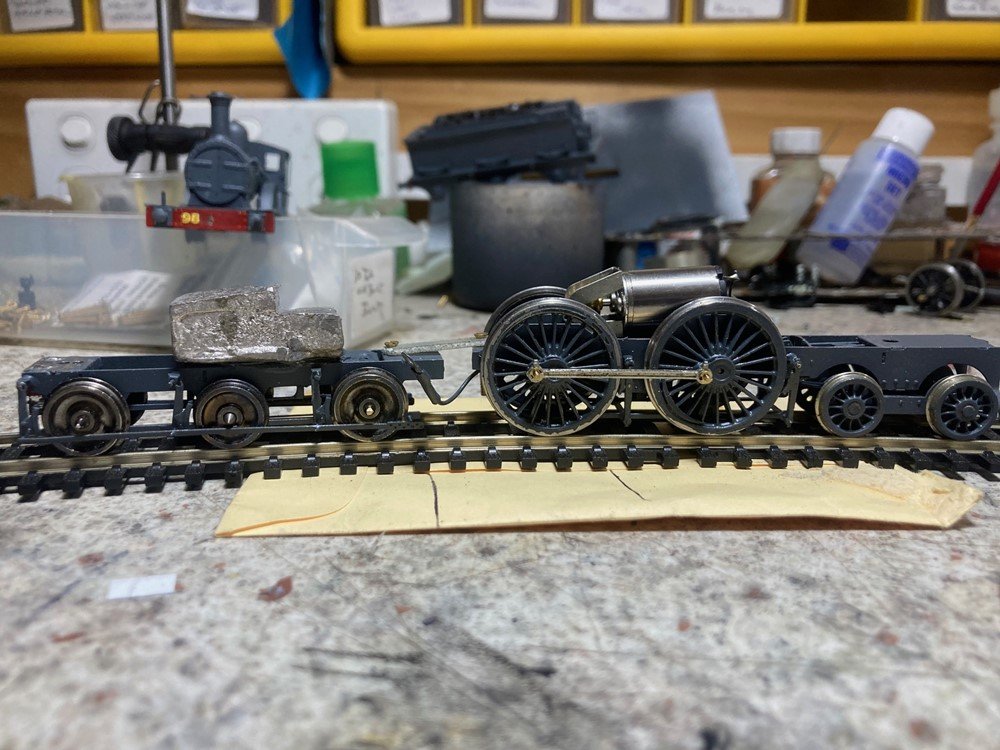
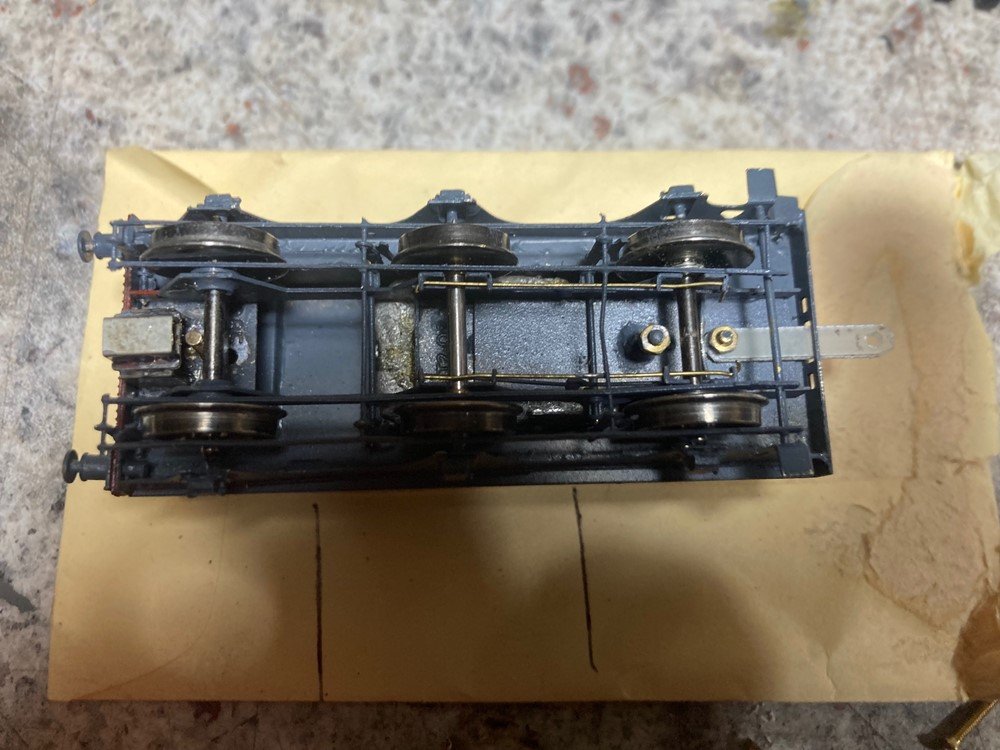

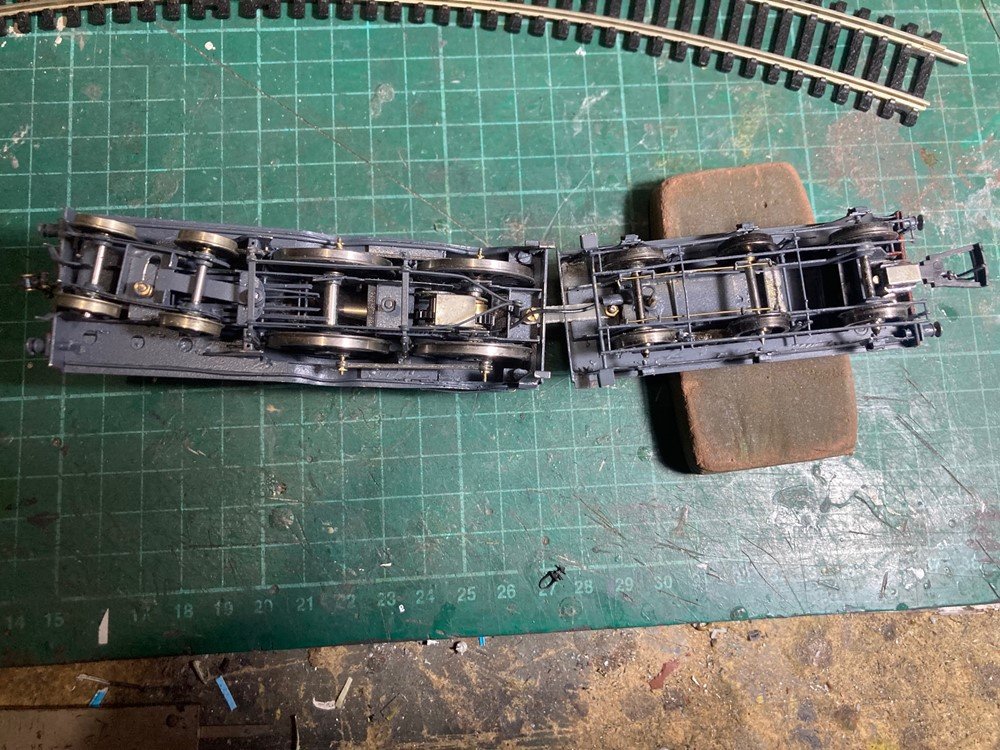
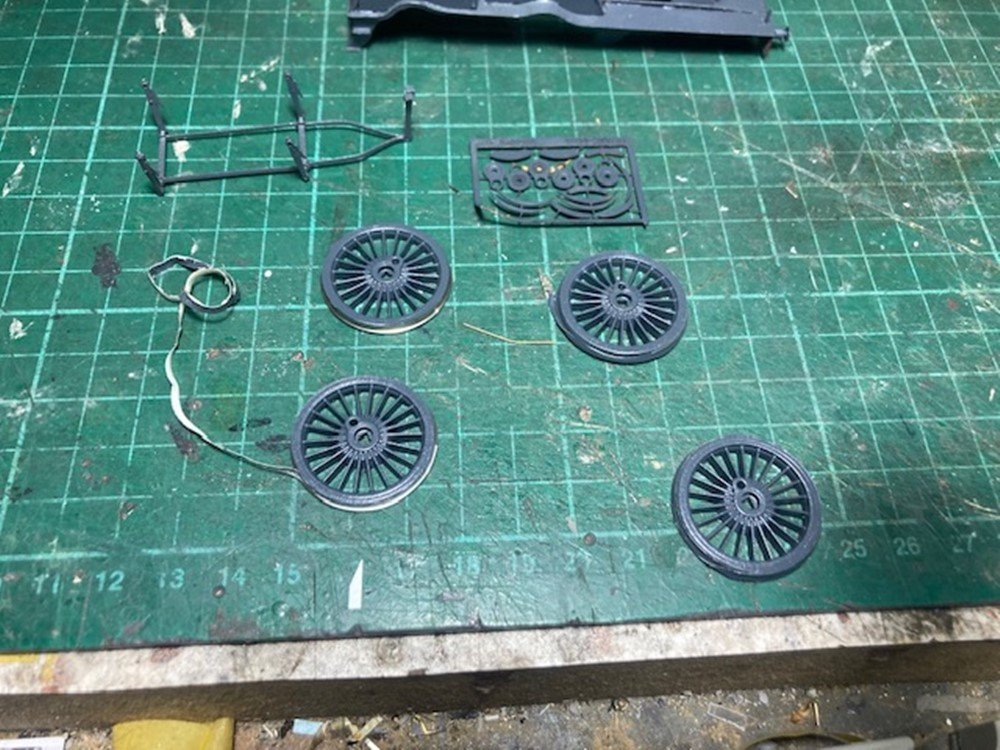
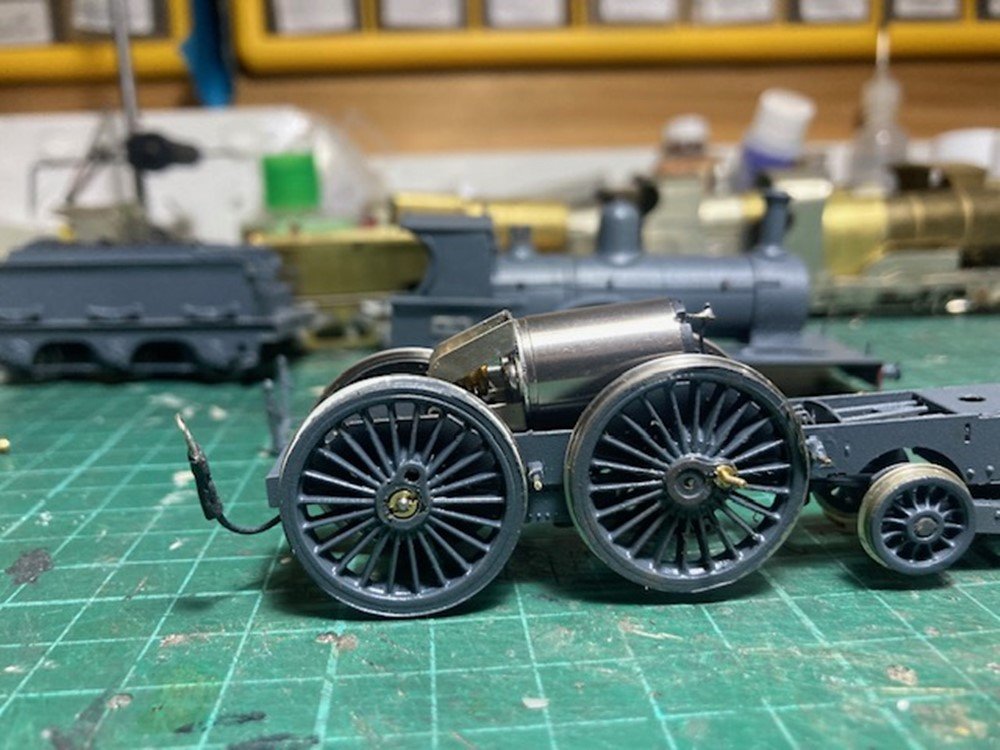

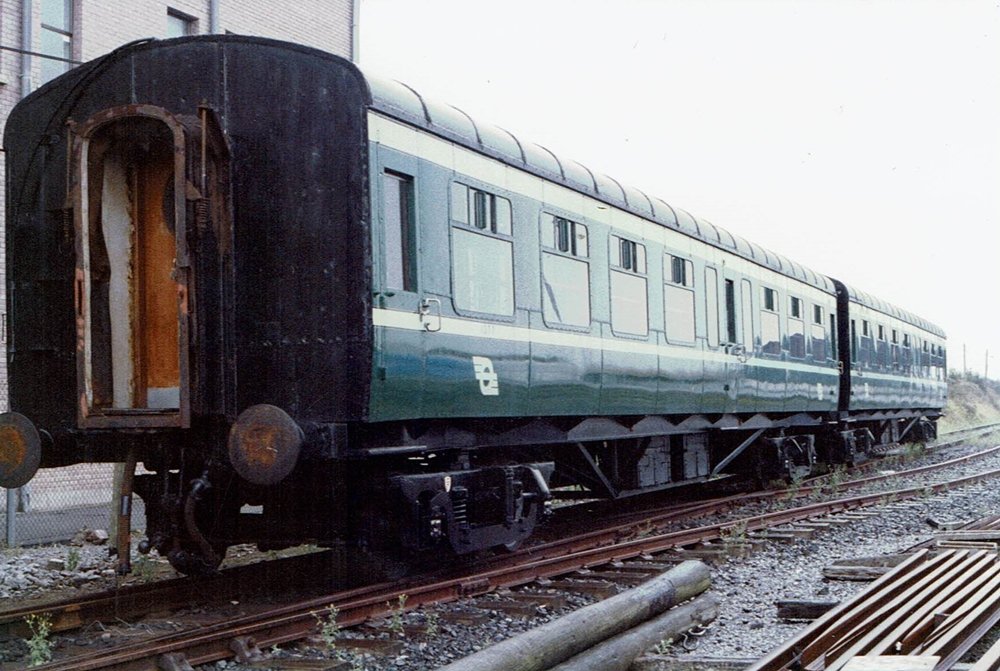
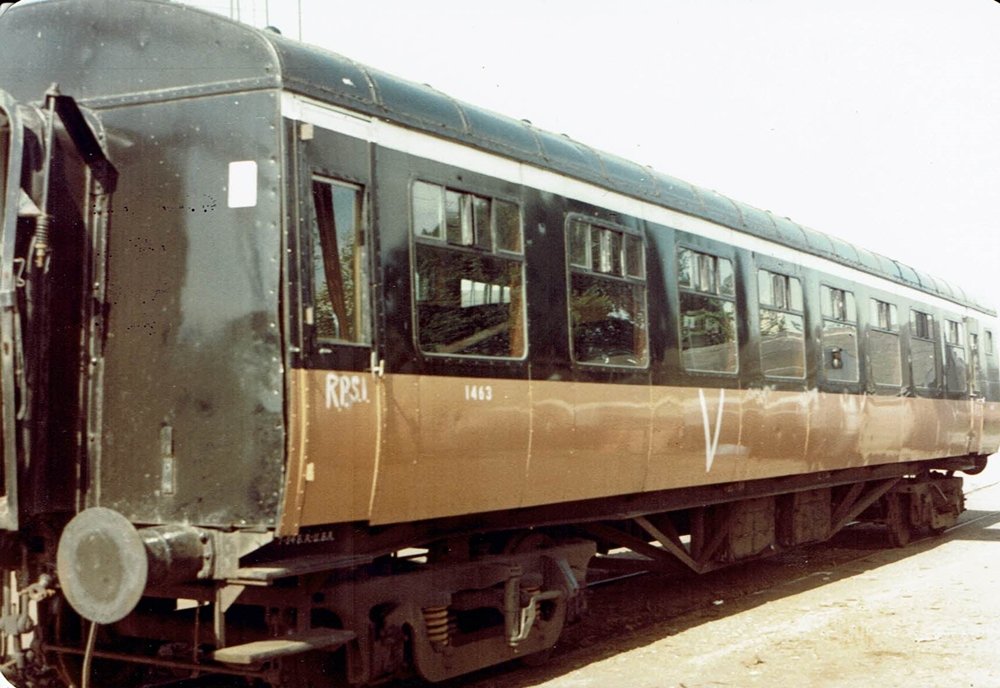
We Got A Flat - Announcing the Bulleid LB and PWD Flat Wagons
in News
Posted
A closer look at the flats in Ernies Cork City Train
The first two wagons are basically Midland and GSWR variants of an 'Irish Standard" flat wagon introduced during WW1.
Apart from the running number the ratchet arrangement for holding down the handbrake level was a standard feature on Midland wagons.
In terms of numbers the 88 LB was fairly insignificant in terms of the actual number of flats in service on CIE the GSWR/ "Irish Standard" type would have predominated into the late 60s, CIE introduced approx. 500 steel floored 20'-20T Flat Wagons for general use and container traffic in the Mid-1960s, possibly leading to the demise of the LBs which were no longer 'on the books" by 1979